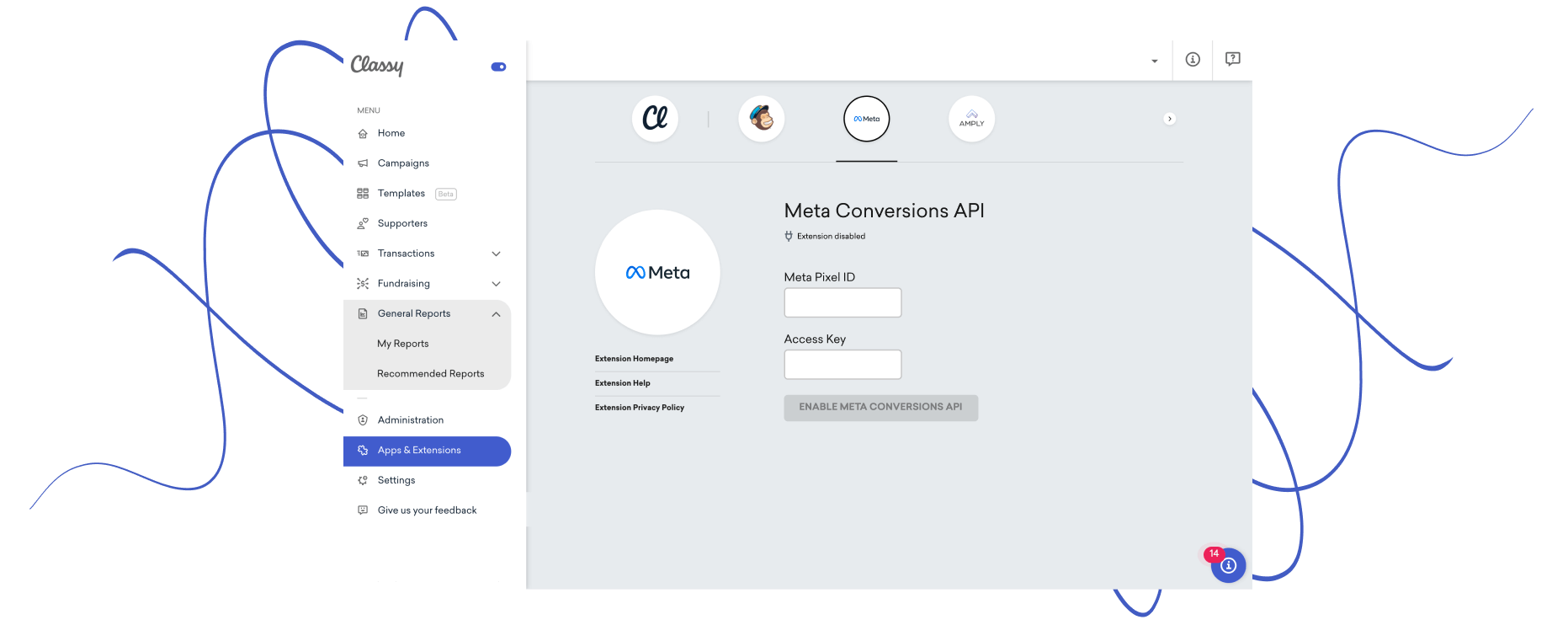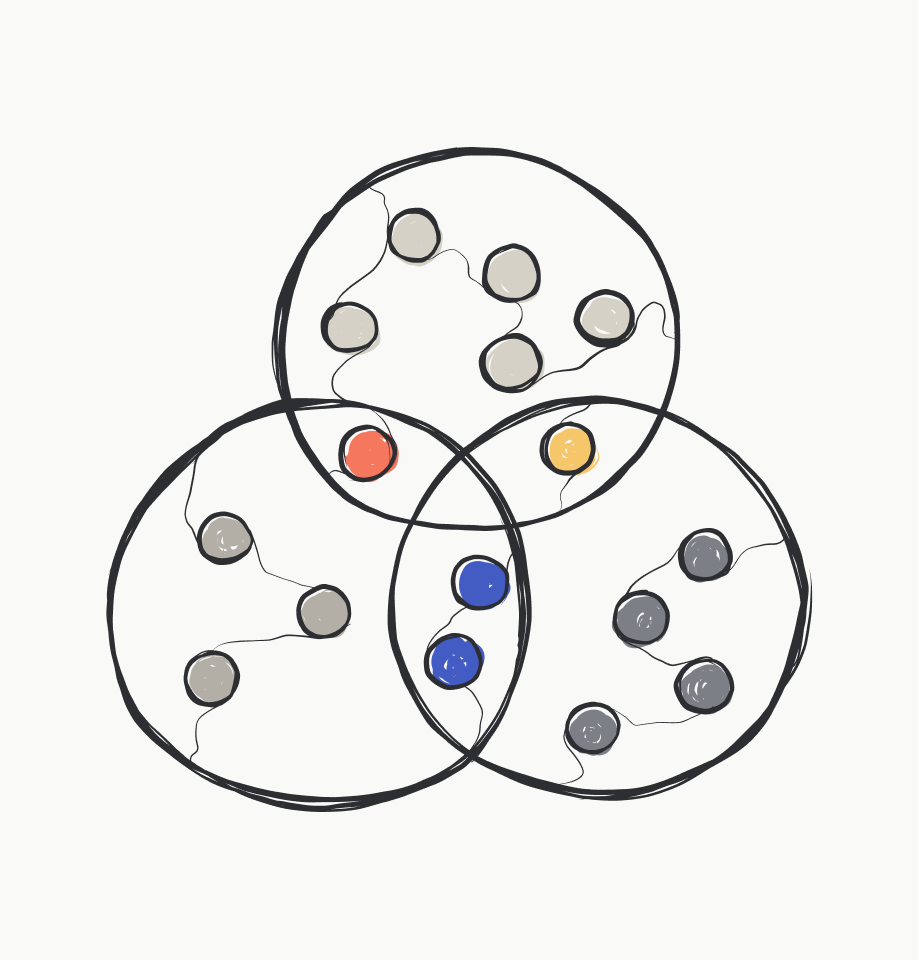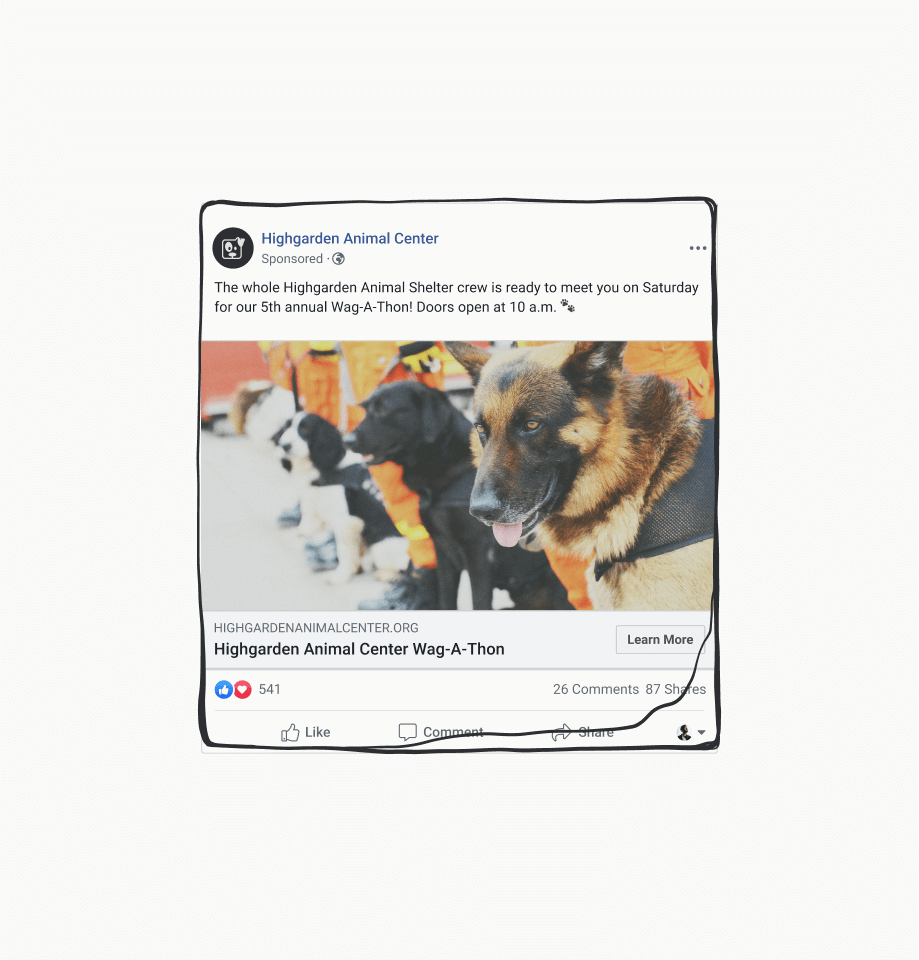Meta Conversions API - A New Integration from Classy
With the Meta Conversions API implemented on Classy, you can ensure conversion events are tracked including; Add to Cart, Complete Registration, Initiate Checkout, Purchase and View Content.


Secure and strengthen the insights that power your Meta campaigns
Meta Conversion API (CAPI) provides a direct, server-side tracking method from your webserver and Classy directly to Meta’s server, bypassing the limitations of a user’s browser. This allows you to see how Meta users are interacting with your ads, and how those ads are behaving. It ensures website users are tracked accurately through Meta Business Manager.

Target unique segments of your most valuable audiences
- Lookalike Audiences
- Value-based Lookalikes
- Website Custom Audiences
- Offline Custom Audiences
Incorporate more donor preferences into the ads people see on Meta
- Dynamic Ads for Retargeting
- Dynamic Ads with Broad Audience
- Dynamic Ads with Cross-Sell Targeting


Drive the outcomes that matter most to your nonprofit
- Conversion Optimization
- Value Optimization
- Lead Optimization
- Incremental Conversion Optimization
- Conversion Lift Analysis
- Data-Driven Attribution
FAQ
Is there a cost to leverage CAPI?
No. This integration is available to all customers on a Pro or Enterprise plan.
Do I need to have a Meta Pixel (aka Facebook Pixel) set up in order to use the Meta Conversions API?
You are not required to have a Pixel installed on your campaign pages in Classy. However, Meta requires a valid Pixel ID to ensure the data tracked by the Conversions API is connected to the right Meta Business Suite account. We strongly recommend that you install the Pixel you intend to use for the Conversions API on your Classy campaign pages as well to capture as much data about conversion events as possible. Meta also recommended this in best practices.
How does CAPI improve Facebook ad campaigns?
CAPI can improve campaigns by optimizing ads that may happen later in a donor’s journey with your organization. It follows a donor’s entire journey from discovering your ad to interacting on the page, which will provide critical offline data. It also will improve your ad targets, so your organization spends less per action.
Can I set up the Meta Conversions API through Google Tag Manager instead?
Classy does not support setting up the Meta Conversions API via Google Tag Manager, which uses a custom tag template, which isn’t available in Classy’s GTM container. Classy offers a direct integration with the Meta Conversions API that doesn’t require Google Tag Manager.
What event types does Classy support?
Look below to see the events you can track through the Meta Conversions API, and which parameters Classy supports for each event. Please note that the Event ID parameter is always sent in order to deduplicate event data. Other Event detail parameters are only sent if the data is available at the time the event occurs.
- Add to Cart – When a ticket is added to a supporter’s cart (by selecting +), or when a supporter adds an additional donation
- Complete Registration – When a fundraiser signs up successfully (P2P), or when a ticket or registration is successfully purchased (RwF)
- Initiate Check Out – A supporter lands on a donation page (checkout form)
- Purchase – When a successful donation is made
- View Content – When a supporter views a page
How soon will the Meta Conversions API collect data on my campaign pages?
Once you have successfully saved your Pixel ID and API access key in Classy Manager, the Meta Conversions API will collect data on conversion events as these events occur. Conversion events will be captured, sent to Meta, and be visible in the Events Manager section of your Meta Business Suite account.
Note: Events that occurred before the integration was enabled on Classy will not be sent to Meta.
How can I check if the Meta Conversions API is capturing data?
To learn more about testing server events, we recommend reading Meta’s Test Events Tool guide.
Where will the conversion data be stored?
Meta stores the collected information. Because of this, we cannot troubleshoot errors, missing or incomplete data in Meta, as we do not have access to your Meta account. However, if you are experiencing issues, we recommend you first double check that the correct Pixel ID and API access key were entered in Classy Manager.
Where can I learn more about the Meta Conversions API?
To learn more about the Meta Conversions API, we recommend viewing the Meta Business Help Center.
How is Classy’s Meta Conversions API integration different from Classy’s Meta Pixel integration? Which should I use?
The Pixel helps you measure what people do in their browsers when they land on your Classy pages after selecting an ad. This data can help you manage and better target your advertising. Classy’s Meta Conversions API integration captures detailed conversion events from Classy’s servers and sends them to Meta’s servers. In general, the Pixel shows more information about the donor journey, whereas the Conversions API is focused on the end result. Because ad blockers or browser privacy settings may impact how much data the Pixel can collect, we recommend using both tools to help you understand and optimize the donor journey.
Please Note:
- The Meta Conversions API is one of a suite of tools available to understand campaign performance. It does not replace other analytics tools, such as Meta Pixel, Google Analytics, Google Tag Manager, etc.
- It is meant to be used in conjunction with other analytics tools as it does not offer the same breadth of event tracking as more traditional analytics tools.
- It is best to think of CAPI and other server-side solutions as a net that captures (an ever-increasing amount of) data that falls through the cracks due to browser or privacy settings
How do I get started?
- Enable the Conversions API in Meta Business Suite
- Copy your Meta Pixel ID and API access key
- Connect to Classy
Detailed instructions can be found here.